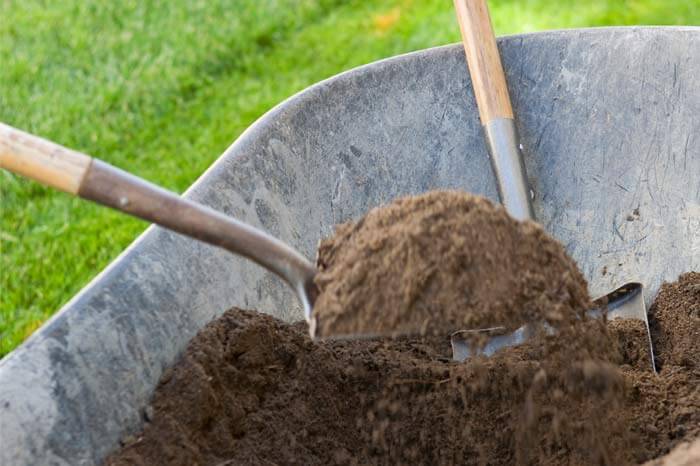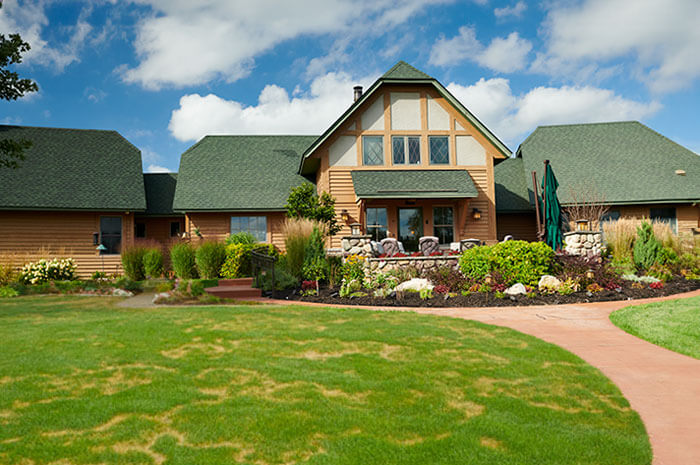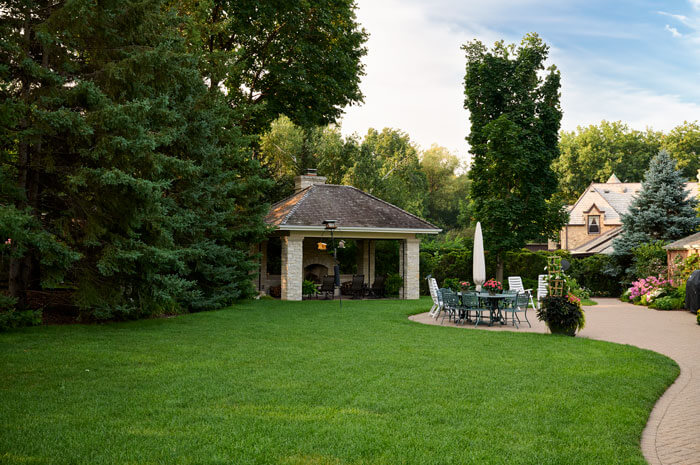
Poor grading, uneven settling, or the decomposition of buried tree stumps, logs, or roots can cause depressions and bumps. While you are dethatching your lawn, check for bumps and depressions. Mark any irregularities with latex spray paint so you can find them easily when you are ready to level.
Depressions
Smooth slight depressions by topdressing—applying a combination of topsoil and compost—the surface topsoil. A wide landscaping rake is the best tool for this job. When handling larger depressions—those more than an inch or two deep and several square feet in area—raise the sod; fill the depression with a mixture of soil, humus, and fertilizer; replace the sod, and press it in place. Be sure to keep repaired areas moist, or the edges will dry out and turn brown.
Bumps
To level small bumps, raise the sod using a sharp spade, and remove the necessary amount of soil beneath it. Cut out at least a 2-foot x 2-foot section of sod. If you lift smaller patches of sod, they will likely dry out and die. While the soil base is exposed, mix in some compost and fertilizer. Soak the area using a hose; press the sod back into place; then sprinkle some soil into the seams. Keep the area watered to prevent lawn brownout.



